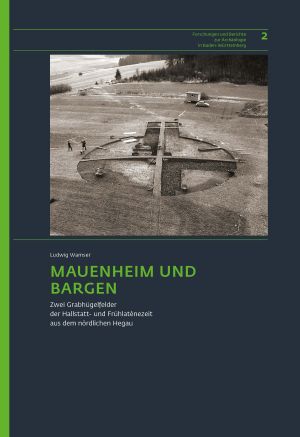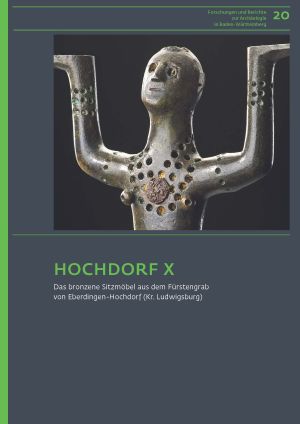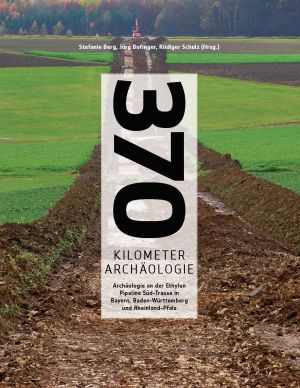Wahl, Joachim
Mauenheim und Bargen: Zwei Grabhügelfelder der Hallstatt- und Frühlatènezeit aus dem nördlichen Hegau
The monograph deals with the Hallstatt cemetery of Immendingen-Mauenheim (district of Tuttlingen), which comprises 23 burial mounds and at least 10 small cremation graves between the mounds, and with the necropolis of Engen-Bargen (district of Constance), which consists of five tumuli. Both sites are located about 700 m apart in the northern Hegau, a few kilometres south of the Danube, between the Alps and the Black Forest. The study is based on a dissertation from the 1970s and is supplemented by new research devoted to specific finds and social and economic aspects. Animal grave goods from the tombs were analysed achaeozoologically. Anthropological studies of the skeletons from the Hallstatt period as well as research on mobility and nutritional status of humans and animals contribute to the reconstruction of Iron Age living conditions in south-western Germany.
Hochdorf X: Das bronzene Sitzmöbel aus dem Fürstengrab von Eberdingen-Hochdorf (Kr. Ludwigsburg)
More than four decades after its excavation, the presentation of the sitting bench, used in its last function as a funeral rest, completes the basic publications on the inventory of the Late Hallstatt period (c. 530 BC) chamber tomb of Hochdorf. The centrepiece of the volume is a catalogue of the overall appearance of this unique piece of furniture, which is based on digital imaging techniques. This is complemented by descriptions of the findings, the recovery, the restoration and production techniques, which close with the presentation of a replica of the piece. Detailed textile archaeological analyses of the rich adhesions on the funerary couch complement the picture. A further focus is on archaeometallurgical examinations of the furniture’s components and its iron substructure. Questions related to the origin of the object are discussed in a cultural-historical study on its southern and italic connections and on the interpretation of the pictorial programme. The volume is completed by bioarchaeological analyses of the deceased from the central grave as well as other burials from the mound area.
370 Kilometer Archäologie - Archäologie an der Ethylen Pipeline Süd-Trasse in Bayern, Baden-Württemberg und Rheinland-Pfalz
Measuring more than 370 km in length, the route of the Ethylene Pipeline South runs through the three states of Bavaria, Baden-Württemberg and Rhineland-Palatinate. Between 2007 and 2011 archaeological excavations were carried out on the EPS route. The number of documented sites is in the hundreds, and more than 100 new discoveries impressively demonstrate that such a project has a literally incisive significance for our cultural landscape. Interesting new discoveries could be made even in supposedly well-investigated landscapes. The temporal span of the investigated sites ranges from the Stone Age to the Modern Age, and the spectrum of archaeological features is similarly complex.









